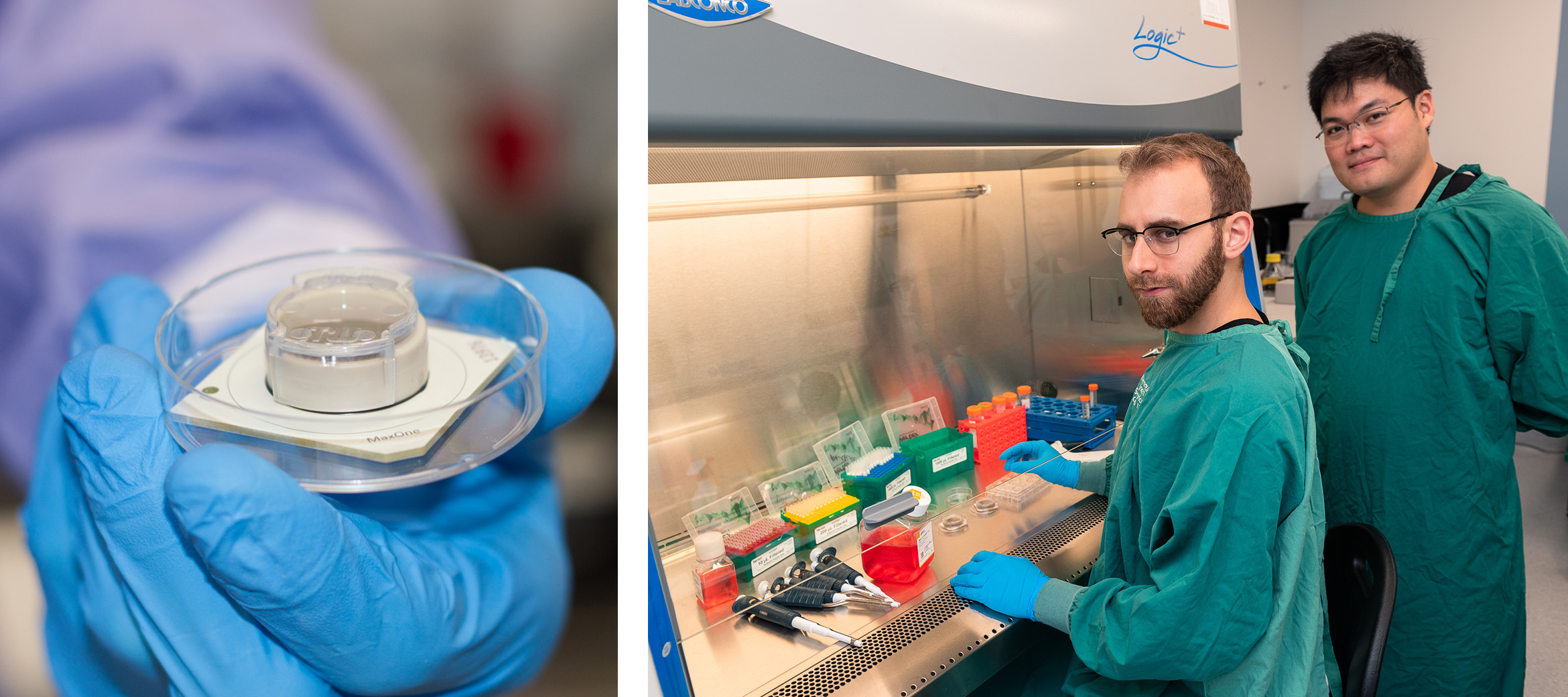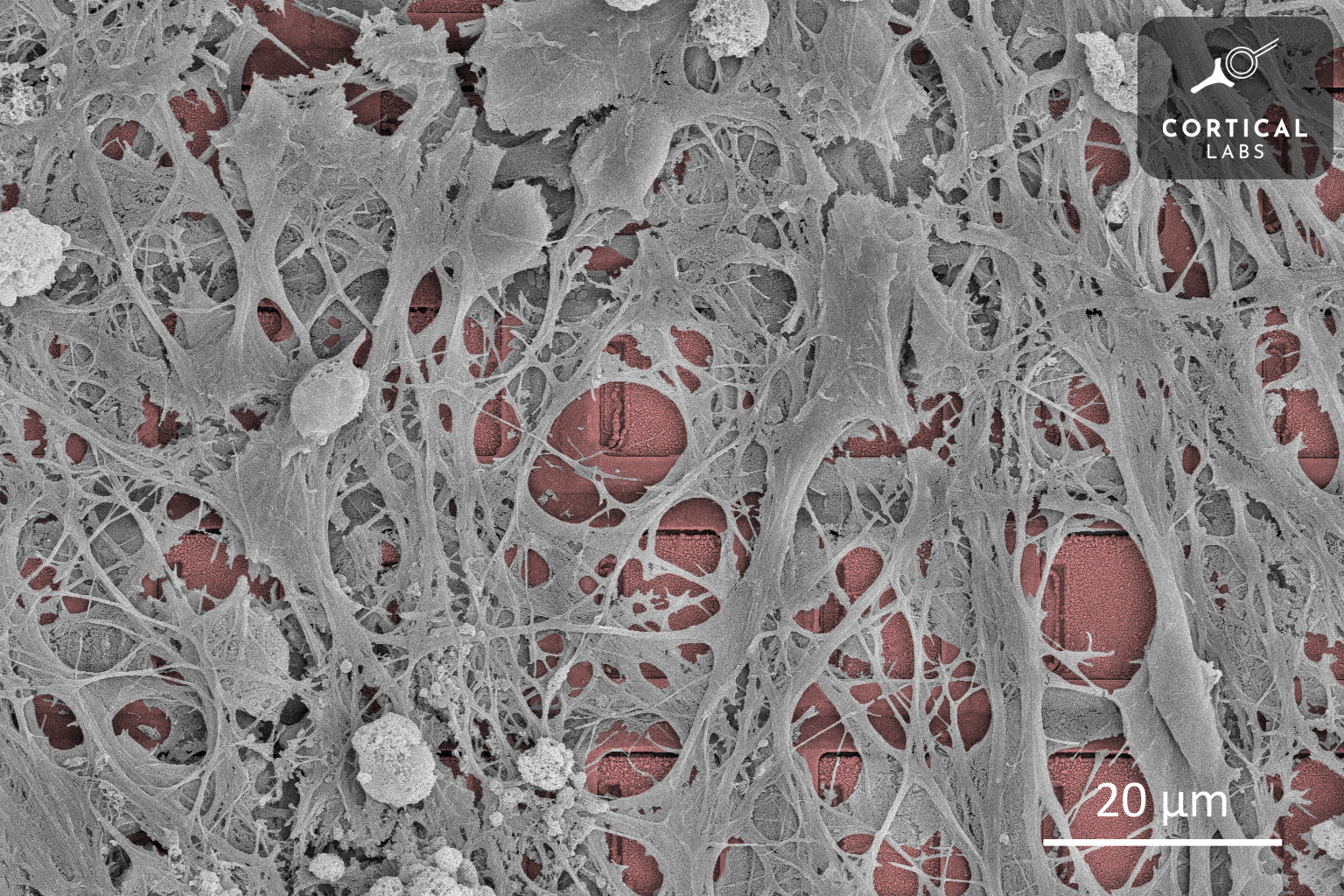Researchers working in neuroscience face a common challenge: the best model for research is the human brain, however, it’s rarely ethical to perform experiments on living humans. This means much research into neurological disorders and consciousness rely on animals and limited computer models. A human-neuron based model could open up new pathways for neurological research.
Additionally, neurons are incredibly space and energy efficient. The human brain is thought to be able to perform an Exaflop – one quintillion (1018) operations per second – using only 20 watts of power. The Oakridge Frontier, one of the most advanced supercomputers in the world, requires 1 million times more power and over 680 square metres of space to do the same. If neurons could be harnessed for computing, it could revolutionise the industry.
An international team of scientists, led by Dr Brett Kagan from Melbourne-based start-up Cortical Labs, have embarked on a project called DishBrain. The goal is to develop a biological computer that can outperform traditional electronic computers in specific applications while consuming significantly less energy.

Left: Photo of DishBrain. Right: Dr Brett Kagan (Chief Scientific Officer) and Hon Weng Chong (Chief Operating Officer) at the fume hood at Cortical Labs.
In a ground-breaking study published in the journal Neuron, mouse and human neurons were placed on an electrode array that could stimulate the cells in a positionally specific way and record their activity. The neurons were connected to a game of Pong, where they received electrical feedback about the position of the ball and paddle via the electrode array. In just under five minutes of gameplay, brain cells coordinated their activity to successfully hit the ball, demonstrating a learning response.
The “free energy principle” suggests that neurons strive to reduce the unpredictability (entropy) of their environment. In Pong, by hitting the ball, the neurons learned to avoid uncertainty, and organised their signalling activity to play the game effectively.
Scanning Electron Microscopy at Microscopy Australia’s Monash University facility, the Ramaciotti Centre for Cryo-EM, was used to examine the integration of neurons into the high-density multi-electrode array.

Cryo scanning electron microscope image of the neurons (grey) on the electrode array (red) taken at the Ramaciotti Centre for Cryo-EM
Next, they plan to explore the brain cells’ behaviour under the influence of alcohol, to observe how they organise themselves when “drunk.” This new avenue of research could help us understand the adaptability of neurons to altered environments.
DishBrain’s “synthetic biological intelligence” model is a significant step forward in our understanding of intelligence and consciousness. It has demonstrated potential not only as biological intelligence for more efficient computing, but also for advancing consciousness research and disease modelling, offering alternatives to animal testing and imperfect computational models, potentially leading to more effective treatments and interventions.
Researcher A/Prof. Adeel Razi of Monash University said “This new technology capability in future may eventually surpass the performance of existing, purely silicon-based hardware. The outcomes of such research would have significant implications.”
The team recently received a $600,000 grant from the Australian Office of National Intelligence to create a DishBrain-based AI with new continual learning capabilities. Continual lifelong learning is something current AI cannot do.
B. Kagan et al., Neuron 2022 DOI: 10.1016/j.neuron.2022.09.001
Light microscopy images of the neurons taken at Monash Micro Imaging
September 21, 2023